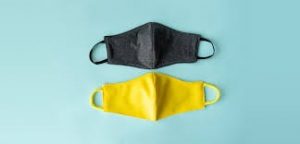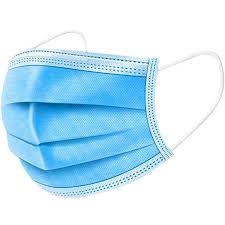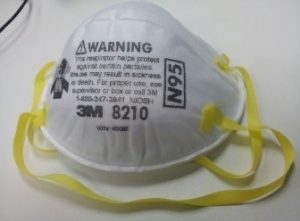UPDATED: Non-Medical Masks and Facing Coverings

Updated as of July 10, 2020
McMaster University decisions related to COVID-19 are based on Public Health advice and government policy. Personal Protective Equipment (PPE) will be provided where it is necessary as a reasonable precaution for the protection of employees when the work is required and the risk related to COVID-19 cannot be sufficiently mitigated through physical distancing and proper hand hygiene.
Common/Public Spaces
To further help limit the spread of COVID-19, McMaster University is implementing a measure that calls for non-medical masks or face coverings to be worn inside buildings that are normally publicly accessible.
Individuals who are in an indoor space that is normally publicly accessible (common areas) will be required to wear non-medical masks or face coverings when physical distancing is not possible. This includes entrances/lobbies, hallways, elevators and other common use facilities such as food services, stores, etc.
Non-Public/Non-Common Work Areas, i.e. Offices, Laboratories
All efforts to achieve physical distancing within the work area must first be exhausted. If physical distancing can be achieved there are no requirements for medical masks, non-medical masks and face coverings.
In work areas where physical distancing cannot be achieved, individuals must wear medical (surgical) masks.
Non-Medical Masks or Face Coverings
 It is important to know non-medical masks and face coverings are not personal protective equipment (PPE). Non-medical masks or face coverings are recommended in public spaces as source control where physical distancing may be difficult.
It is important to know non-medical masks and face coverings are not personal protective equipment (PPE). Non-medical masks or face coverings are recommended in public spaces as source control where physical distancing may be difficult.
Face coverings/non-medical masks, like those made at home, are intended to limit the risk of the wearer exposing another person to undetected illness or infection, including COVID-19. These masks are not regulated and are very different from medical surgical masks or N95 masks. Wearing face coverings does not eliminate the need for physical distancing practices or hand hygiene.
The World Health Organization recommends 3 layers for cloth masks: an inner layer being an absorbent material like cotton, a middle layer of non-woven materials such as polypropylene (for the filter) and an outer layer, which is a non-absorbent material such as a polyester or a polyester blend.
It is important that the following measures are taken when wearing a non-medical mask or face covering:
- Wash your hands with soap and water or hand sanitizer if water is not readily available
- Place the mask on carefully, ensuring it covers the mouth and nose, and place loops around each ear or tie securely to minimize any gaps between the face and the mask
- Avoid touching the mask while wearing
- When removing the mask, do not touch the front of the mask, but instead untie it/remove from behind.
- After removal or whenever a used mask is inadvertently touched, clean your hands using an alcohol-based hand rub or soap and water
- Replace the mask with a new clean, dry mask, or wash the mask, as soon as it becomes damp or soiled
Instructions on how to make a face covering.
For more information on masks, visit the Public Health Ontario website and the Government of Ontario website.
Masks for Work Where Physical Distancing is Not Possible
Personal Protective Equipment (PPE) will be provided where it is necessary as a reasonable precaution for the protection of employees when the work is required and the risk related to COVID-19 cannot be sufficiently mitigated through physical distancing and proper hand hygiene. In such cases, PPE may include a mask.

Surgical Masks
A surgical mask is a loose-fitting, disposable device that creates a physical barrier between the mouth and nose of the wearer and potential contaminants in the immediate environment. Surgical masks are regulated. If worn properly, a surgical mask is meant to help block large-particle droplets, splashes, sprays, or splatter that may contain germs (viruses and bacteria), keeping it from reaching your mouth and nose.
Medical masks continue to be in short supply and are valuable personal protective equipment needed by healthcare staff. Under circumstances where physical distancing is not possible, surgical masks will be provided in order to continue to work safely.
Masks for Healthcare Workers

An N95 mask or N95 respirator is a particulate-filtering face piece respirator that meets the U.S. National Institute for Occupational Safety and Health (NIOSH) N95 classification of air filtration, meaning that it filters at least 95% of airborne particles. N95 masks must be kept for health care workers and others providing direct care to COVID-19 patients.
All employees who are required to wear an N95 mask must first have specific training and respirator/mask fit testing successfully completed by Environmental and Occupational Health Support Services (EOHSS) or Faculty of Health Sciences Safety Office (FHSSO).
COVID-19, Health & Safety, Things to Know
